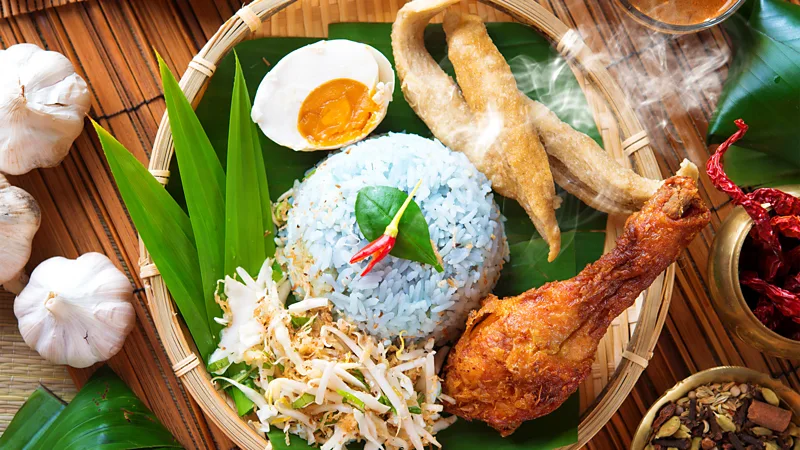Southeast Asia is renowned for its vibrant and diverse culinary landscape, shaped by a rich history of cultural exchange, trade, and colonization. Over the past 600 years, this region has developed a unique fusion cuisine that combines indigenous flavors with influences from neighboring countries and colonial powers. This blog post explores the fascinating evolution of Southeast Asia's fusion cuisine, highlighting its key characteristics and iconic dishes.
## The Roots of Fusion Cuisine in Southeast Asia
### Historical Influences
The culinary traditions of Southeast Asia have been significantly influenced by various cultures due to its strategic location along ancient trade routes. Key influences include:
- **Indian Influence**: Introduced through trade and cultural exchange, Indian spices and cooking techniques have left a lasting mark on many Southeast Asian cuisines. Dishes like curries and biryanis are prime examples of this influence.
- **Chinese Influence**: The introduction of wok cooking and noodles has shaped many local dishes. Chinese immigrants brought their culinary traditions, which blended seamlessly with local ingredients and flavors.
- **European Colonization**: The arrival of European powers, particularly the Portuguese, Dutch, and French, introduced new ingredients such as chili peppers from the Americas and techniques that transformed local cooking styles.
### The Role of Ingredients
Southeast Asian cuisine is characterized by its bold flavors and diverse ingredients. Common elements include:
- **Chilies**: These provide signature heat to many dishes, a legacy of the Portuguese introduction in the 16th century.
- **Herbs and Spices**: Fresh herbs like lemongrass, galangal, and basil are staples that enhance the complexity of flavors.
- **Coconut Milk**: Used widely in curries and desserts, coconut milk adds richness and depth to dishes.
## Iconic Dishes Reflecting Fusion
### 1. Phở (Vietnam)
Phở is a quintessential Vietnamese dish that exemplifies the fusion of local ingredients with Chinese influences. This aromatic noodle soup features a rich broth made from beef or chicken, rice noodles, and an array of herbs. Its balance of flavors—sweet, savory, and spicy—makes it a beloved staple not just in Vietnam but around the world.
### 2. Nasi Lemak (Malaysia)
Nasi lemak is often considered Malaysia's national dish. It consists of fragrant rice cooked in coconut milk, served with sambal (a spicy chili paste), fried crispy anchovies, peanuts, boiled eggs, and cucumber. This dish reflects the Malay culinary tradition while incorporating influences from Chinese and Indian cuisines.
### 3. Bánh Mì (Vietnam)
Bánh mì is a delicious sandwich that showcases the fusion between Vietnamese and French culinary traditions. It combines a crispy baguette filled with various ingredients such as grilled meats, pickled vegetables, cilantro, and spicy sauces. This dish symbolizes the adaptability of Vietnamese cuisine to incorporate foreign elements while maintaining its unique identity.
### 4. Rendang (Indonesia)
Rendang is a slow-cooked beef dish originating from Indonesia that features a complex blend of spices such as turmeric, ginger, lemongrass, and chilies. While it has roots in Minangkabau culture, rendang has evolved through interactions with Indian and Middle Eastern cuisines over centuries.
## Modern Trends in Southeast Asian Fusion Cuisine
Today, chefs across Southeast Asia continue to experiment with fusion dishes by blending traditional flavors with contemporary culinary techniques. This evolution reflects not only globalization but also a desire to innovate while honoring cultural heritage.
### Culinary Innovation
Restaurants in major cities like Bangkok, Hanoi, and Kuala Lumpur are increasingly offering modern takes on traditional dishes. For instance:
- **Deconstructed Dishes**: Chefs are reimagining classic dishes by presenting them in new formats or using unexpected ingredients.
- **Global Ingredients**: The incorporation of international ingredients into traditional recipes allows for creative interpretations while maintaining local flavors.
## Conclusion
Southeast Asia's 600-year-old fusion cuisine is a testament to the region's rich history of cultural exchange and adaptation. Each dish tells a story of its origins while reflecting the diverse influences that have shaped its culinary landscape. As food lovers explore these vibrant flavors, they not only savor delicious meals but also connect with the intricate tapestry of history that defines Southeast Asian cuisine. Whether you're indulging in phở in Vietnam or enjoying nasi lemak in Malaysia, each bite offers a unique glimpse into the region's dynamic culinary heritage.
Citations:
[1] https://en.wikipedia.org/wiki/Fusion_food
[2] https://www.cuisinenet.com/world/southeast-asian-cuisine/
[3] https://eggyolk.vn/exploring-the-rich-culinary-traditions-of-southeast-asia/
[4] https://exquisite-taste-magazine.com/the-history-of-fusion-cuisine/
[5] https://journalofethnicfoods.biomedcentral.com/articles/10.1186/s42779-023-00189-0
[6] https://www.tiyara.org/blog/the-cultural-diversity-of-india
[7] https://www.orchidsinternationalschool.com/blog/recommended/cultural-diversity-in-india-customs-languages-and-traditions
[8] https://duac.org.in/Upload/City%20Level%20Studies/Site%20specific%20design%20for%20wards/653954173410426.pdf





